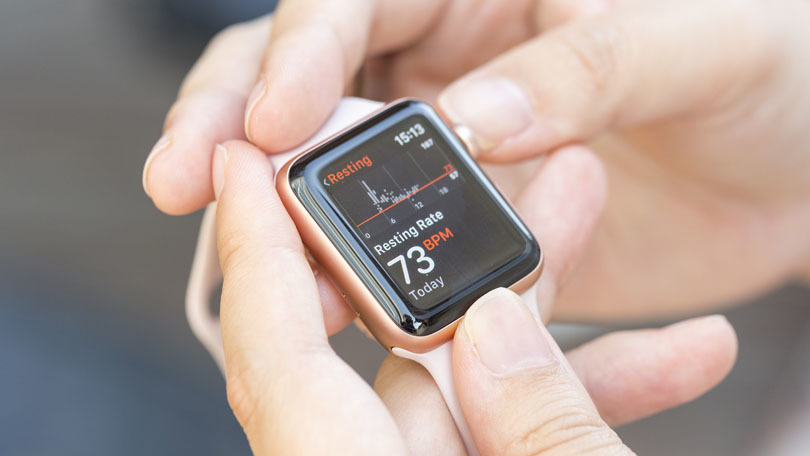Need to check your heart rate on a regular basis? Your Apple Watch includes a Heart Rate monitor that can automatically display your heart rate before, during, and after a workout.
The heart rate monitor can display your current rate, resting heart rate, and walking heart rate so you can compare them. You can also tell the watch to notify you of any dramatic rise in your heart rate during a time when you’ve been inactive.
With watchOS 7, Apple has added new workout modes for dancing, core training, functional strength training, and cool down, all of which will track your heart rate as you work up a sweat. Plus, the new built-in sleep tracker will monitor and record your heart rate as you sleep.
Make sure you’ve updated your Apple Watch to the latest version. On your phone, open the Watch app and to go General > Software Update. The app will either tell you that your software is up to date or prompt you to download and install the latest version. Now, let’s look at how to use the Apple Watch to monitor your heart rate.
View Your Heart Rate
Open the Heart Rate app on the home screen of your Apple Watch (hint: it’s the icon that looks like a heart). If you haven’t yet used the app, a message tells you what the app can do.
Tap Next and another message will tell you how the Heart app can notify you when your heart rate rises above 120 beats per minute. Tap Turn On and now the watch will alert you to any increases in your heart rate after 10 minutes of inactivity.

The app then displays your current heart rate. Swipe up the screen to see your resting heart rate for the day. Swipe up once more to see your average walking heart rate for the day. Tap the Current link at the top of the screen to see all three heart rates on the same screen.

You can access the Heart Rate monitor more easily than going through the home screen. Just switch your watch face to one that displays a heart on the screen, such as the Activity face, Breathe face, Color face, or Modular face. You can also add the Heart Rate app to any face that accepts complications. Tap the heart icon on the watch face to get your current heart rate.

You can also set the Heart Rate monitor to alert you if your rate goes above or below certain levels. To do this on your watch, go to Settings > Heart. Tap the entry for High Heart Rate Notifications and set the beats per minute (BPM) to a specific number.
Go back to the previous screen and tap the entry for Low Heart Rate Notifications. Set the BPM to a specific number. Your watch will then notify you if your heart rate falls above or below the numbers you set for a period of 10 minutes.
Track Heart Rate During Workouts
Now when you start a workout, you can track your heart rate. At your watch’s home screen or a watch face, like the Activity face, tap the Workout icon (hint: it looks like a running figure). At the Workout screen, tap the entry for the type of workout you’re about to perform, such as Outdoor Walk, Indoor Cycle, Elliptical, and Core Training, among other workouts.

To better control and time your workout, tap on the ellipsis icon next to the workout to enter the number of calories, time, distance, or another goal you wish to achieve. As you work out, your watch displays the elapsed time, active calories being burned, total calories being burned, and your heart rate.
After you’ve completed the workout, the watch displays your average heart rate and the range for your heart rate during the exercise. Tap Done to record the workout.

You can review your heart rate and other factors for past workouts by opening the Fitness app on your iPhone (known as the Activity app pre-iOS 14). The Summary section shows you a chart for the current day. The Workouts section shows you each day on which a workout was recorded.

Tap the Show More link to go further back in time. Tap a specific workout to see its details. The screen displays your average heart rate for this workout. If the workout lasted long enough, a chart at the bottom shows how your heart rate fluctuates during the activity.

